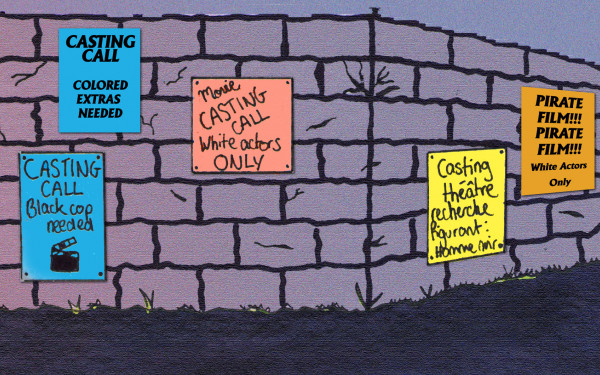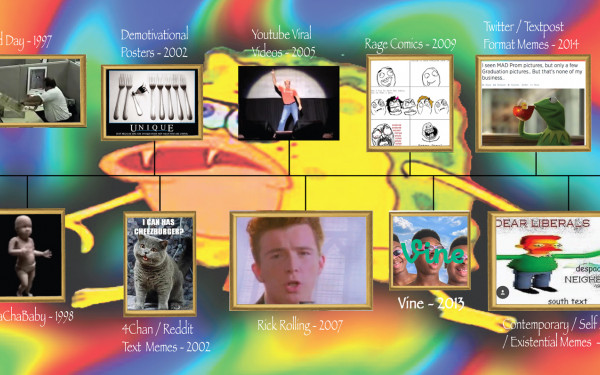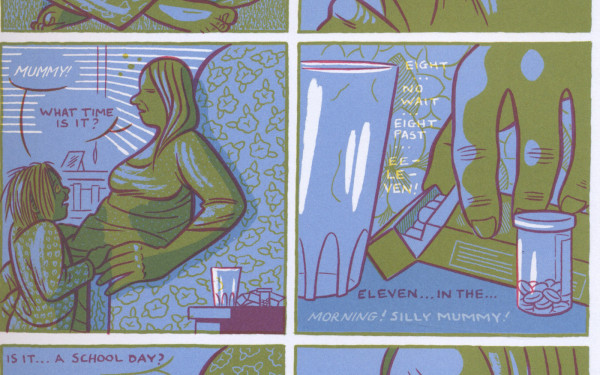A Diversified Art Space
Le Livert is Studio, Gallery and Art School All in One
In an increasingly polarized landscape that alienates small artist-run initiatives from the big money art world of fairs and exclusive institutions, galleries and organizations are cultivating new methods to bridge the gap and maintain a cohesive community.
Montreal is lucky to lay claim to a variety of innovative projects that are finding ways around the financial impediments to collaboration, and Le Livart on Saint-Denis Street has set out to do just that.
Since opening in October 2016, Le Livart has quickly established itself as a space that fosters community, discussion, and collaboration. Acting as a gallery, event space, studio, and art school, the center began as the passion project of Marc O’Brien-Miro and Cindy Tessier Trudeau, both business based professionals with an appetite for the arts. Inspired by their travels and the art scenes they encountered in other cities, the couple felt they could bring something to the community in Montreal.
Seoul in particular informed their vision. As O’Brien-Miro describes it, the South Korean capital is divided into neighborhoods that each specialize in one thing. Insadong is the heart of the contemporary art scene, and he was captivated by the energy it exuded. They wanted to create the same immersive vibe in Montreal, so they set out to build a space that would be accessible to everyone.
“Our idea for Le Livart was to develop an integrated art center where you can find, under one roof, a diversified and complete offering of everything related to art,” O’Brien-Miro said. The hope was that in hosting a wide range of experiences at one locale, they would diversify and engage with the greatest number of people, allowing a wider access to sincere engagement with art.
They bring this vision to life by having artist studios on site. The 13 artists’ studios that are housed in the same building – a disused presbytery and convent next to the former shrine of the Saint Jude Oratory – have been active for about a year and a half. The studios were the first part of the project to be realized, and every studio is located in one of the original bedrooms lived in by the Dominicans. Currently full of talented and diversified artists, these are undoubtedly coveted spaces from which to expand one’s craft.
“I see the Livart as an innovative design approach of having a gallery and welcoming artists without any governmental, private or public boundaries.” _—Alex Côté _
The studios help elevate the Livart mission. They facilitate and greatly encourage dialogue between visitors and artists, giving them the opportunity to discover, understand and participate in the artistic process behind the work done by the artists on-site. You can actually visit the gallery, find a piece you like, and then have the opportunity to go meet the artist who created it and witness their process first hand.
The fascination with the studio, both from other artists and observers, speaks to curiosity and the desire for understanding within the community. The current exhibition at Le Livart, entitled “Transformations,” runs until July 14, and features the work of 20 diverse artists.
Alex Côté, one of the artists currently on display, also helped introduce the exhibition with a powerful performance piece at the June 7 opening. “I see the Livart as an innovative design approach of having a gallery and welcoming artists without any governmental, private or public boundaries,” Côté said.
Côté, who works as a multidisciplinary artist, drawing inspiration from movement, nature, technology, and spirituality, is interested in exploring the way we interact with each other and our surroundings. His installation and performance work takes shape through an investigation into the natural material that he shares with his environment.
All his work is a result of collaboration, he said, because this is how he extends the network of ideas and messages that can be exposed in a piece. “When you start collaborating with other artists from different kinds of backgrounds, it also means a great window of possibilities in which an interdisciplinary process could begin,” he said.
As his comments suggest, what makes a strong art community is sharing, whether it’s knowledge, ideas, space, or even material. Montreal has a reputation for being fertile territory in terms of independent, experimental art and DIY projects like Le Livart celebrate and enhance this legacy.
In terms of what lies ahead for this project, O’Brien-Miro seemed to feel that the possibilities were endless. Thankful for all the inspiring people they’ve had the opportunity to collaborate with since opening last fall, the plan is to remain adaptable, respond to what the community wants, and to always make it a priority to promote emerging artists. Hopefully the diversity of the art community in Montreal will continue to breakdown binaries, foster new relationships, and encourage participation.

_600_832_s.png)




